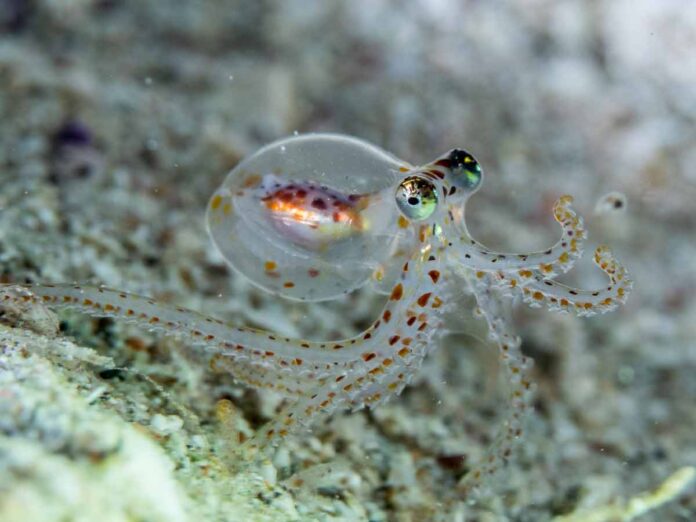Our magnificent little blue marble of a planet is home to an astonishingly diverse array of lifeforms, but some are unquestionably odder than others.
This is especially true of the octopus, an animal so strange that it is frequently compared to an alien.
According to British neuroscientist Anil Seth, the octopus is the only creature on Earth that is strange enough to have evolved elsewhere. Some fringe theories even claim that octopuses are aliens.
There is, however, plenty of evidence linking octopus evolution to Earth, and a team of scientists led by Max-Delbrück-Center for Molecular Medicine systems biologist Nikolaus Rajewsky has just discovered a new one.
It’s a feature that octopus brains share with human brains and other vertebrate brains: a large repertoire of microRNA in their neural tissue.
Octopuses are odd in a variety of ways. They, like other cephalopods such as cuttlefish, are intelligent. Squid brains have been discovered to be nearly as complex as dog brains. There’s even evidence that octopuses can dream, which is uncommon in invertebrates.
Unlike other intelligent animals, their nervous system is highly distributed, with a large proportion of their 500 million-odd neurons distributed throughout their arms. Each arm is capable of making decisions on its own and can even respond to stimuli after being severed.
Cephalopods’ complex nervous systems and intelligence have been a source of consternation. These characteristics are fairly common in vertebrates, but they really stand out in invertebrates.
Another strange thing about octopuses and other cephalopods. To adapt to their environment, their bodies can rapidly edit their RNA sequences on the fly. This is not how adaptation usually occurs; normally, changes in the DNA are passed on to the RNA.
Rajewsky began to wonder what other RNA secrets octopuses might be hiding.
Rajewsky and his colleagues sequenced RNA from Octopus vulgaris, the common octopus, using 18 samples obtained from dead octopuses provided by the Stazione Zoologica Anton Dohrn marine research institute in Italy. A whole California two-spot octopus (Octopus bimaculoides) and a Hawaiian bobtail squid were also included in the study (Euprymna scolopes).
The sequencing produced a profile of the messenger RNAs and small RNAs found in the samples. And the results were unexpected.
The team discovered that octopuses have a lot of microRNA, or miRNA. In the common octopus, they discovered 164 miRNA genes organised into 138 miRNA families, and in the California two-spot octopus, they discovered 162 miRNA genes organised into the same 138 families. And 42 of the families were novel, with the majority being found in the brain and neural tissue.
MiRNA are non-coding RNA molecules that play an important role in gene expression by binding to larger RNA molecules and assisting cells in fine-tuning the proteins they produce.
The fact that these miRNA families, as well as the RNA binding sites, were preserved in the octopus suggests that they still play a role in octopus biology, though scientists aren’t sure what that role is or which cells the miRNAs are involved with.
The only comparable expansions occurred in vertebrates, though on a smaller scale. For context, the human genome encodes approximately 2,600 mature miRNAs. However, the octopus miRNA family count is comparable to that of other animals such as chickens and frogs.
According to the researchers, the discovery suggests that complex intelligence, including cephalopod intelligence, may be linked to miRNA expansion.
Interestingly, this isn’t the only similarity between octopus and vertebrate brains. Scientists previously discovered that both human and octopus brains contain a large number of DNA segments known as transposons. There appears to be a lot more going on in an octopus’s head (and arms) than we realise.
Rajewsky’s team will now try to figure out exactly what those miRNAs are doing.
The findings were published in Science Advances.

